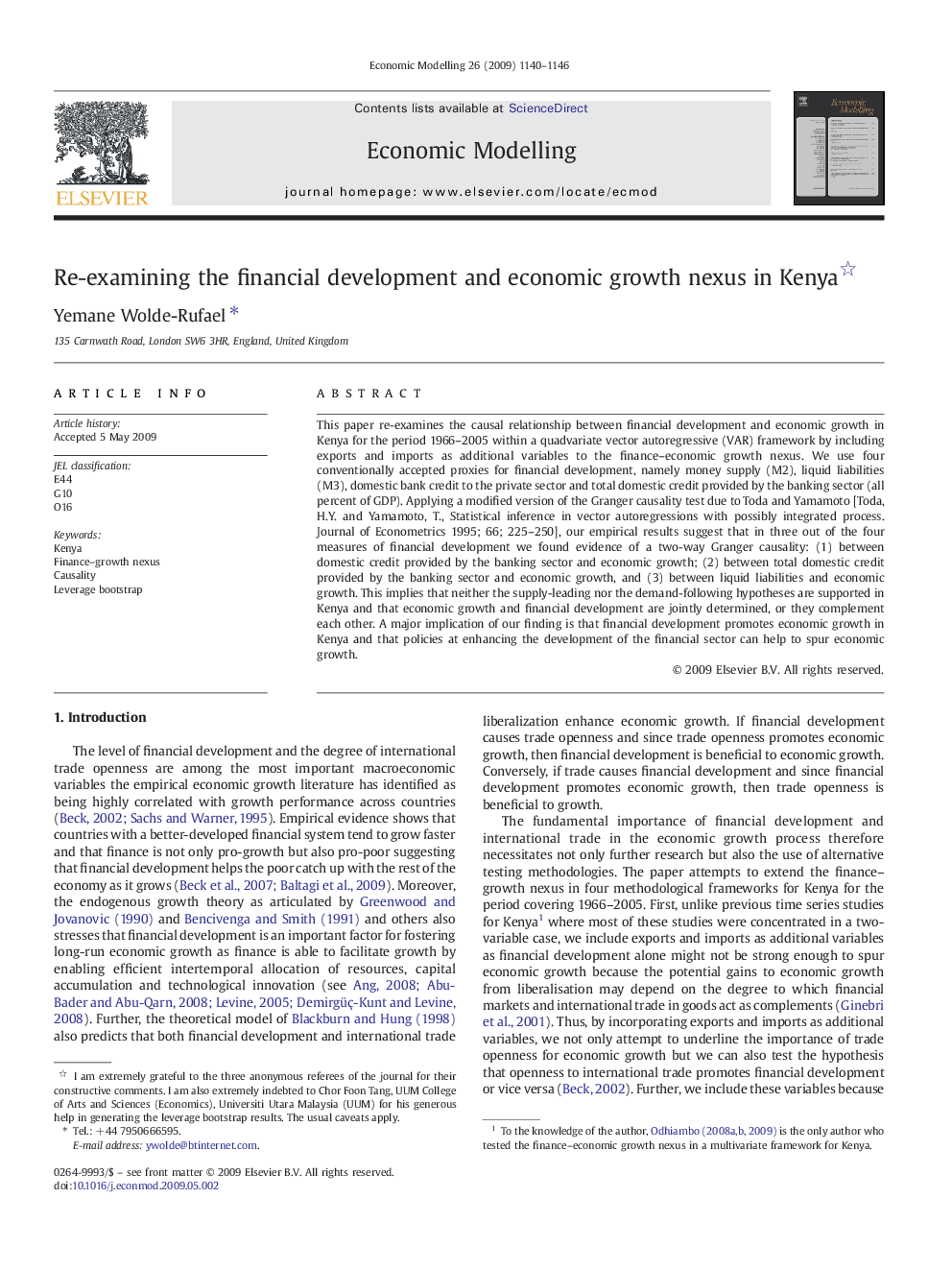| Article ID | Journal | Published Year | Pages | File Type |
|---|---|---|---|---|
| 5055576 | Economic Modelling | 2009 | 7 Pages |
This paper re-examines the causal relationship between financial development and economic growth in Kenya for the period 1966-2005 within a quadvariate vector autoregressive (VAR) framework by including exports and imports as additional variables to the finance-economic growth nexus. We use four conventionally accepted proxies for financial development, namely money supply (M2), liquid liabilities (M3), domestic bank credit to the private sector and total domestic credit provided by the banking sector (all percent of GDP). Applying a modified version of the Granger causality test due to Toda and Yamamoto [Toda, H.Y. and Yamamoto, T., Statistical inference in vector autoregressions with possibly integrated process. Journal of Econometrics 1995; 66; 225-250], our empirical results suggest that in three out of the four measures of financial development we found evidence of a two-way Granger causality: (1) between domestic credit provided by the banking sector and economic growth; (2) between total domestic credit provided by the banking sector and economic growth, and (3) between liquid liabilities and economic growth. This implies that neither the supply-leading nor the demand-following hypotheses are supported in Kenya and that economic growth and financial development are jointly determined, or they complement each other. A major implication of our finding is that financial development promotes economic growth in Kenya and that policies at enhancing the development of the financial sector can help to spur economic growth.
